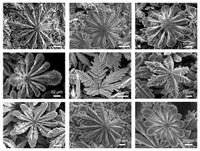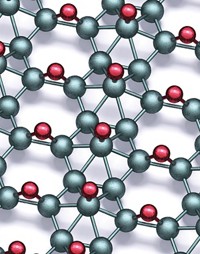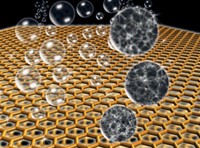Advertisement
Grab your lab coat. Let's get started
Welcome!
Welcome!
Create an account below to get 6 C&EN articles per month, receive newsletters and more - all free.
It seems this is your first time logging in online. Please enter the following information to continue.
As an ACS member you automatically get access to this site. All we need is few more details to create your reading experience.
Not you? Sign in with a different account.
Not you? Sign in with a different account.
ERROR 1
ERROR 1
ERROR 2
ERROR 2
ERROR 2
ERROR 2
ERROR 2
Password and Confirm password must match.
If you have an ACS member number, please enter it here so we can link this account to your membership. (optional)
ERROR 2
ACS values your privacy. By submitting your information, you are gaining access to C&EN and subscribing to our weekly newsletter. We use the information you provide to make your reading experience better, and we will never sell your data to third party members.
Materials
Quasicrystalline Oxides
Method converts conventionally ordered crystalline films to quasicrystals
by Mitch Jacoby
October 14, 2013
| A version of this story appeared in
Volume 91, Issue 41
Two years after the 2011 Nobel Prize in Chemistry was awarded for the discovery of quasicrystals, this class of unusually ordered materials remains relatively obscure. Unlike conventional crystals, quasicrystals lack periodicity, meaning their atomic structures do not repeat in three dimensions at fixed intervals. Most quasicrystals, some of which are used to harden steel and endow high-end cookware with stick- and scratch-resistance, are metals and are prepared via a small number of alloying methods. Stefan Förster, Wolf Widdra, and coworkers at Martin Luther University of Halle-Wittenberg, in Germany, have demonstrated a new way to make quasicrystals and used the method to make a quasicrystalline oxide film (Nature 2013, DOI: 10.1038/nature12514). After growing a crystalline film of BaTiO3 on platinum via conventional methods, the team heated the material in vacuum. On the basis of electron diffraction and microscopy analysis, they conclude that the heat treatment and BaTiO3/platinum interfacial energy drive the oxide to adopt a quasicrystalline structure. The method, which had not been expected to yield oxide quasicrystals, might lead to other oxide quasicrystals with unexpected properties, Widdra says.





Join the conversation
Contact the reporter
Submit a Letter to the Editor for publication
Engage with us on Twitter